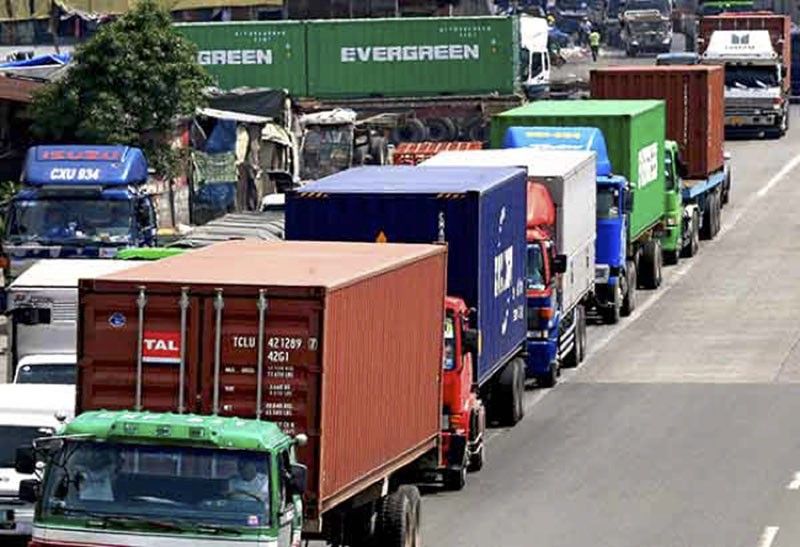Philippine logistics sector shifting into higher gear

MANILA, Philippines — The sight of roads, bridges, expressways – wherever they are being built – is a positive development for the country’s logistics sector.
The NLEX Harbor Link Segment 10, one of the latest road projects set to be completed this year, is the second phase of the NLEX Harbor Link project – a 5.7-km elevated expressway that will connect Segment 9 at MacArthur Highway in Valenzuela City to C-3 Road/5th Avenue in Caloocan City, extending 2.6-km from C3 in Caloocan to R10 in Navotas City.
It is designed to provide direct access between the port area and the northern provinces of Luzon via NLEX. This connector road has been envisioned to primarily cater to cargo trucks from the port area traversing different inland destinations in Central and Northern Luzon.
President and chief executive officer of NLEX Corp. Rodrigo Franco, in a recent statement, said: “About 240,000 to 260,000 vehicles pass by NLEX, 20 percent of which are trucks – and we expect them to go through NLEX Harbor Link Segment 10. Instead of just doing one round per day, they could do a number of turnaround trips for 24 hours.”
One leap forward
Along with the promise to spur economic progress by significantly reducing the travel time of cargo trucks, the much-anticipated opening of NLEX Harbor Link Segment 10 augurs well for the Philippine transport logistics industry.
“If we can travel from the port of Manila to NLEX for only 10 minutes, we could just imagine the savings derived from it in terms of diesel consumption,” said businessman Edgar Aglipay, owner of EMME Subic Transport Corp and senior advisory council chairman of Port Users Confederation of the Philippines Inc. “We can do more trips because it will only take a short while for us to travel from the port to NLEX,” he said.
Luzon Cisco Transport Inc. operations manager Rexel Castro said NLEX Harbor Link Segment 10 inspires a positive outlook for the logistics sector, noting that being an alternative route, “it may reduce traffic on the roads where trucks traverse before.”
He also said that the Philippine logistics sector is currently “in a period of growth,” spurred by the government effort to implement programs to modernize the trucking industry. “The number of old, dilapidated trucks are getting less,” he said, but the fact remains, according to Castro, that “a heavy number of cargo vehicles still pile up the roads, adding longer hours for travelers.”
Need to speed up
In a recent study by the World Bank, the 2016 Logistics Performance Index (LPI) reported that the Philippines has the highest logistics cost among Southeast Asian nations and is lagging way below neighboring countries such as Singapore, Malaysia, Thailand and Indonesia. The study also attributed the weak performance of the logistics sector to the poor quality of the country’s road infrastructure.
Further, the government think-tank Philippine Institute for Development Studies (PIDS) reported in 2015 that a growing economic cost due to Manila truck ban has been one of the major challenges faced by the logistics sector.
“There is no doubt that huge cargo trucks moving to and out of Manila contribute to traffic congestion. The problem lies with the fact that those trucks are compelled to use the city streets to get to the port of Manila, the country’s major seaport,” said Gilberto Llanto, PIDS president and author of “Cargo Truck Ban: Bad Timing, Faulty Analysis, Policy Failure”.
Trucking costs, according to PIDS, have skyrocketed to P36,000 for shipping a 20-ft or a 40-ft container by truck. It doubled from P18,000 before the truck ban was implemented. Also adding to the burden is the current lack of depot for cargo trucks that currently use Manila’s roads virtually serving as a huge parking space.
“Truck ban in Manila is also a big problem for us because it shortens running hours for our trucks,” Aglipay said, adding that, “we have to sacrifice for the good of the majority.”
As the country’s central shipping gateway for local and international trade, the port of Manila has been vital to the country’s transport and logistics network. Road congestion, especially between the port and different inland destinations, has sadly characterized Metro Manila’s major roads used by cargo trucks.
Right now, according to trucking companies, cargo trucks move from port of Manila to NLEX at an average of 1.5 hours, and could go unfortunately longer to 2.5 hours under unfavorable conditions, such as inclement weather and heavier traffic flow
- Latest




























